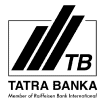Plan your next product with guidance from experienced professionals and expand your ideas through thorough research
These clients already did



About Product Strategy
We understand these questions well and build our approach to product strategy from these critical questions. A well-defined product strategy provides clarity and direction, ensuring that all teams work cohesively towards common objectives.
This is where Vacuumlabs can help you take the first crucial steps. Our approach to product strategy is rooted in a deep understanding of user needs, market dynamics, and the latest technology. By combining strategic expertise with hands-on collaboration, we bridge the gap between vision and implementation. Whether it’s refining an existing product or crafting something entirely new, we can deliver strategies that are actionable, scalable, and designed to drive meaningful results.
Get people, infrastructure, technology, and touchpoints in order.
Seamless and satisfying experiences through the entire customer journey.
Efficient processes to ensure consistent and reliable service delivery.
Robust infrastructure to support the product and its users effectively.
Product strategy ensures that product development is aligned with company objectives. It provides a roadmap that ties product decisions to measurable business outcomes.
By focusing on user needs and market gaps, it creates products that resonate with customers.
In a competitive market, having a clear product strategy helps companies differentiate themselves. It enables them to identify unique selling propositions (USPs), innovate effectively, and stay ahead of competitors.
Product strategy helps companies prioritize where to allocate time, talent, and resources. It avoids scattershot development and focuses efforts on high-impact projects that will generate the most value.
Seamless communication is crucial in aligning the development process with the envisioned outcomes. We aim to develop a deep understanding of the company’s goals, priorities, and the rationale behind the plan. This ensures perfect alignment throughout the development phase. Additionally, having a single provider maintain consistency throughout the project can significantly reduce the risk of misinterpretation or misalignment between teams.
Efficiency is enhanced through reduced handovers, which eliminates the need for extensive knowledge transfer between separate strategy and development teams. This saves time and minimizes the loss of information. Streamlined decision-making is another benefit, as a unified team can make quicker decisions without the need to navigate the complexities of inter-company coordination.
An integrated workflow, where strategy and development are handled under one roof, makes the process faster and more agile. Adjustments can be made in real time without bureaucratic delays. Early problem detection is also critical; we can identify potential challenges early in the process and adjust development plans accordingly to mitigate risks.
Dynamic adjustments are essential when market or organizational priorities shift. We can quickly revise both product strategy and development plans without the need to renegotiate contracts or re-engage different entities. Moreover, a unified team allows for iterative improvement, refining both the strategy and product based on real-world feedback.
Our holistic expertise offers better problem-solving capabilities by understanding both the strategic vision and technical constraints. This allows for more realistic and innovative solutions. End-to-end insight is another advantage, as we can oversee the project from inception to completion, ensuring that both high-level goals and technical details are effectively addressed.
Craft a vision statement that captures your product’s long-term purpose and impact.
Ensure the vision aligns with your company’s broader mission and values.
Validate the vision with stakeholders to build alignment and excitement.
Condusting qualitative research (e.g., interviews, focus groups) to understand user behaviors and emotions.
Gathering quantitative data through surveys, usability tests, and behavioral analytics.
Using tools like:
Analysis of industry trends, competitive offerings, and emerging technologies.
Conducting competitor audits to identify strengths, weaknesses, and gaps.
Using tools like SWOT (Strengths, Weaknesses, Opportunities, Threats) to frame your findings.
Synthesize insights from user and market research to identify your product’s core differentiators.
Articulate a clear and compelling UVP that communicates tangible benefits.
Validate your UVP through messaging tests and early customer feedback.
Identify key features that support the UVP and address core user needs.
Map out user journeys to ensure features deliver value across the entire experience.
Create a phased roadmap, prioritizing an MVP to validate assumptions quickly.
Choose metrics that track user satisfaction, engagement, and business outcomes.
Examples include:
User Satisfaction: NPS, CSAT, usability test success rates.
Engagement: Retention, active users, time on task.
Acquisition: Conversion rates, cost per acquisition (CPA).
Monetization: ARPU, LTV, churn rate.
Use these metrics to inform iterative improvements.
Share research findings widely to build empathy and alignment around user needs.
Use visuals like roadmaps, journey maps, and dashboards to make your strategy accessible.
Regularly update stakeholders on progress, wins, and learnings.
Schedule regular strategy reviews to assess progress and refine goals.
Leverage experimentation (e.g., A/B tests, prototypes) to validate ideas before full implementation.
Be open to pivots when metrics or external factors demand it.
At early stages of creating a Product Strategy it is important to test and validate the assumptions and be ready to adjust if necessary.
Product strategy is a plan that outlines how a product will achieve business goals, target the right audience, and differentiate from competitors. It guides the development, launch, and management of a product throughout its lifecycle.
Product strategy is important because it aligns a company’s objectives with market needs and customer expectations, ensuring that product development efforts are focused and effective in creating value and driving growth.

Case studies
Read about a selection of our past projects
Our team of experts will work closely with you to understand your goals and deliver a truly customized solution that meets your unique needs.







This site is protected by reCAPTCHA and the Google Privacy Policy and Terms of Service apply.
By submitting this form you agree to the processing of your personal data according to our Privacy Policy.
By submitting this form you agree to the processing of your personal data according to our Privacy Policy.
Retail Banking
B2B Banking
Fintech and Neobanks
Product
Engineering
Operations
Latest Whitepapers
Interested in a specific topic?
Let us know - we are happy to help
Thank you for contacting us! One of our experts will get in touch with you to learn about your business needs.
We use cookies on our website to give you the most relevant experience by remembering your preferences and repeat visits. By clicking “Accept All”, you consent to the use of ALL the cookies. However, you may visit “Cookie Settings” to provide a controlled consent. You can also "Reject All".
| Cookie | Duration | Description |
|---|---|---|
| cookielawinfo-checkbox-analytics | 11 months | This cookie is set by GDPR Cookie Consent plugin. The cookie is used to store the user consent for the cookies in the category "Analytics". |
| cookielawinfo-checkbox-functional | 11 months | The cookie is set by GDPR cookie consent to record the user consent for the cookies in the category "Functional". |
| cookielawinfo-checkbox-necessary | 11 months | This cookie is set by GDPR Cookie Consent plugin. The cookies is used to store the user consent for the cookies in the category "Necessary". |
| cookielawinfo-checkbox-others | 11 months | This cookie is set by GDPR Cookie Consent plugin. The cookie is used to store the user consent for the cookies in the category "Other. |
| cookielawinfo-checkbox-performance | 11 months | This cookie is set by GDPR Cookie Consent plugin. The cookie is used to store the user consent for the cookies in the category "Performance". |
| viewed_cookie_policy | 11 months | The cookie is set by the GDPR Cookie Consent plugin and is used to store whether or not user has consented to the use of cookies. It does not store any personal data. |